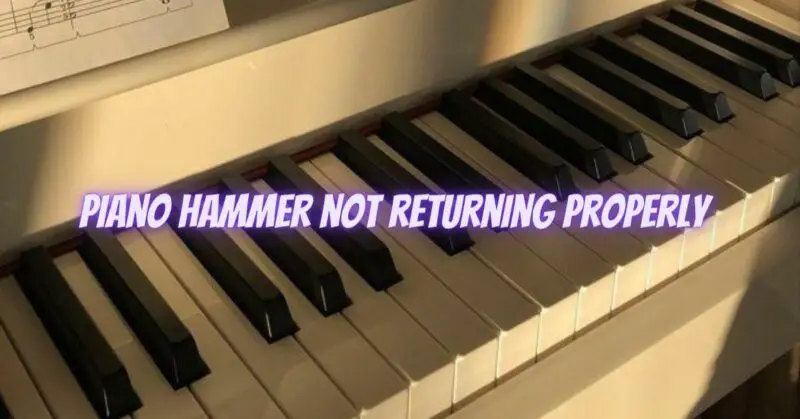A piano hammer that does not return properly after striking the string can disrupt the instrument’s playability and affect the overall performance. This issue is often caused by various factors, including misalignment, wear, or damage to the piano action components. Here’s a step-by-step guide to troubleshoot and fix a piano hammer that is not returning properly:
1. Preliminary Inspection:
- Play the affected key and observe the behavior of the hammer. Check if it returns to its resting position immediately after striking the string or if it remains raised.
2. Check for Misalignment:
- Inspect the piano action, including the flange, knuckles, repetition lever, and other relevant parts. Look for any misalignments or obstructions that may hinder the hammer’s movement.
- Gently move each part to check for any excessive play or resistance. If you notice misalignments, consider seeking the help of a professional piano technician to make the necessary adjustments.
3. Examine Hammer Felt:
- Worn or damaged hammer felt can impede the hammer’s proper return. Carefully examine the hammer felt for signs of wear, unevenness, or visible damage.
- If the hammer felt appears worn, voicing the hammers may help. Voicing involves reshaping and needling the felt to achieve a consistent tone and responsiveness. It is best to have this done by a professional piano technician with experience in voicing techniques.
4. Check Damper Mechanism:
- Ensure the damper mechanism is functioning correctly. A malfunctioning damper may interfere with the hammer’s movement and prevent it from returning properly.
- Inspect the damper felts and other components for any issues. If you find problems with the damper mechanism, seek professional assistance to repair or adjust it properly.
5. Address Humidity Fluctuations:
- Changes in humidity can affect the wooden parts of the piano, causing expansion or contraction. Make sure your piano is placed in a stable environment with controlled humidity levels to minimize the impact of these fluctuations.
6. Lubrication:
- Proper lubrication of moving parts in the piano action can help ensure smooth movement and proper return of the hammers. However, this task should be carried out by a professional piano technician, as improper lubrication can cause damage to the instrument.
7. Seek Professional Assistance:
- If the hammer still does not return properly or if you are unsure about making adjustments yourself, it is best to seek the assistance of a qualified piano technician. They have the expertise and specialized tools to diagnose and fix more complex problems in the piano action.
8. Regular Maintenance:
- Regular tuning, regulation, and maintenance by a professional piano technician are essential for keeping your piano in optimal condition and preventing issues like hammers not returning properly.
In conclusion, troubleshooting and fixing a piano hammer that is not returning properly require a careful inspection of the piano action and hammer components. Examine the hammer felt, damper mechanism, and other parts for issues. Seek professional help if needed, and ensure regular maintenance to keep your piano in excellent playing condition. With proper care and attention, your piano will continue to produce beautiful and resonant tones for years to come.


